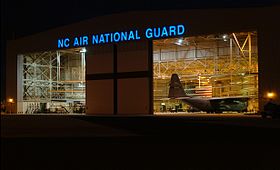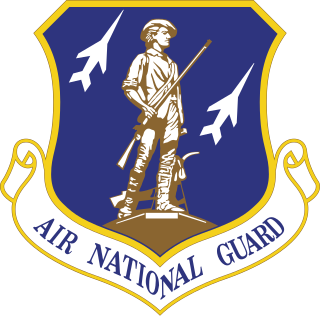
The Air National Guard (ANG), also known as the Air Guard, is a federal military reserve force of the United States Air Force, as well as the air militia of each U.S. state, the District of Columbia, the Commonwealth of Puerto Rico, and the territories of Guam and the U.S. Virgin Islands. It, along with the Army National Guard component of each state, district, commonwealth or territory, makes up the National Guard of each region as applicable.
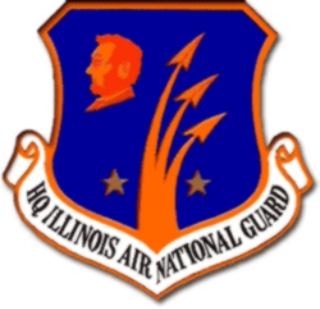
The Illinois Air National Guard is the aerial militia of the State of Illinois, United States of America. It is, along with the Illinois Army National Guard, an element of the Illinois National Guard.

The Texas Air National Guard (TX ANG) is the aerial militia of the State of Texas, United States of America. It is, along with the Texas Army National Guard, an element of the Texas National Guard. No element of the Texas Air National Guard is under United States Air Force command. They are under the jurisdiction of the Governor of Texas through the office of the Texas Adjutant General unless they are federalized by order of the President of the United States. The Texas Air National Guard is headquartered at Camp Mabry, Austin, and its chief of staff is Brigadier General Matthew Barker.

The Georgia Air National Guard is the aerial militia of the State of Georgia, United States of America. It is, along with the Georgia Army National Guard, an element of the Georgia National Guard.

The Kentucky Air National Guard (KY ANG) is the aerial militia of the Commonwealth of Kentucky, United States of America. It is, along with the Kentucky Army National Guard, an element of the Kentucky National Guard.

The Ohio Air National Guard is the aerial militia of the State of Ohio, United States of America. It is, along with the Ohio Army National Guard, an element of the Ohio National Guard.

The Alaska Air National Guard (AK ANG) is the aerial militia of the State of Alaska, United States of America. It is, along with the Alaska Army National Guard, an element of the Alaska National Guard.
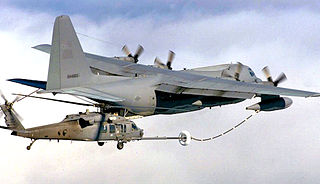
The New York Air National Guard (NY ANG) is the aerial militia of the State of New York, United States of America. It is, along with the New York Army National Guard, an element of the New York National Guard.

The 121st Air Refueling Wing is a unit of the Ohio Air National Guard, stationed at Rickenbacker Air National Guard Base, Columbus, Ohio. If activated to federal service, the Wing is gained by the United States Air Force Air Mobility Command.

The 118th Wing is a unit of the Tennessee Air National Guard, stationed at Joint Base Berry Field, formerly Berry Field Air National Guard Base, Nashville, Tennessee. The 118th is equipped with the MQ-9 Reaper. If activated to federal service, it is gained by the United States Air Force Air Combat Command.
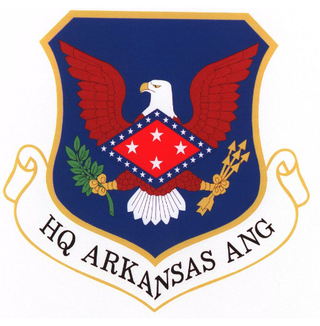
The Arkansas Air National Guard, commonly known as the Arkansas Air Guard, is the aerial militia of the State of Arkansas, United States of America. It is, along with the Arkansas Army National Guard, an element of the Arkansas National Guard. As state militia units, the units in the Arkansas Air National Guard are not typically in the normal United States Air Force chain of command unless federalized. They are under the jurisdiction of the Governor of Arkansas through the office of the Arkansas Adjutant General unless they are federalized by order of the President of the United States. The Arkansas Air National Guard is headquartered at North Little Rock, and its commander is currently Brigadier General William M. Leahy.

Muñiz Air National Guard Base is the home base for the Puerto Rico Air National Guard. This installation is located within the grounds of Luis Muñoz Marín International Airport in Carolina, Puerto Rico 14 km east of San Juan, Puerto Rico.

The 179th Cyberspace Wing is a unit of the Ohio Air National Guard, stationed at Mansfield Lahm Air National Guard Base, Mansfield, Ohio. If activated to federal service with the United States Air Force, the Wing is gained by the Air Combat Command (ACC).

The 175th Wing is a unit of the Maryland Air National Guard, stationed at Warfield Air National Guard Base, Middle River, Maryland. If activated to federal service, components of the Wing are gained by the two separate major commands of the United States Air Force: Air Combat Command (ACC) and United States Air Forces in Europe (USAFE).

The 156th Wing is a unit of the Puerto Rico Air National Guard, stationed at Muñiz Air National Guard Base, in Carolina, Puerto Rico. If activated to federal service with the United States Air Force, the wing is operationally gained by the Air Mobility Command (AMC).

The South Carolina Air National Guard (SC ANG) is the aerial militia of the State of South Carolina, United States of America. It is, along with the South Carolina Army National Guard, an element of the South Carolina National Guard.

The 156th Airlift Squadron is a unit of the North Carolina Air National Guard 145th Airlift Wing. It is assigned to Charlotte Air National Guard Base, North Carolina and is equipped with the Boeing C-17 Globemaster III aircraft.

The 198th Airlift Squadron was the last flying squadron of the Puerto Rico Air National Guard (PRANG) 156th Airlift Wing located at Muñiz Air National Guard Base, in Carolina, Puerto Rico. The 198th last assigned aircraft was the WC-130H Hercules. The 198th was established in October 1944 as the 463d Fighter Squadron, was re-designated as the 198th and allotted to the PRANG in May 1946, redesignated from fighter to airlift in October 1998, and was inactivated on 31 December 2019.
The United States Air Force's 263rd Combat Communications Squadron is an Air National Guard combat communications unit located at the Stanly County Airport Air National Guard Station in Albemarle, North Carolina.
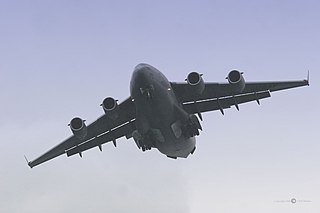
The 145th Airlift Wing is a unit of the North Carolina Air National Guard. It is assigned to Charlotte Air National Guard Base, North Carolina and is equipped with the Boeing C-17 Globemaster III aircraft. If activated to federal service in the United States Air Force, the 145th is gained by Air Mobility Command.
